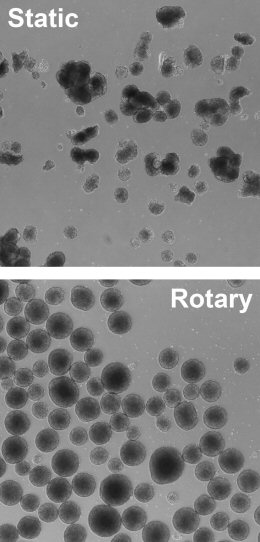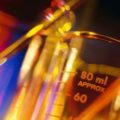
New research from the Georgia Institute of Technology and Emory University suggests that embryonic stem cells may develop much better under shaky conditions. The researchers discovered that moderate and controlled physical movement of embryonic stem cells in fluid environments, similar to the shaking that occurs in the womb, improves their development. The study, published in the journal Stem Cells also found that different types of movement appear to control what type of cell they become.
“Embryonic stem cells develop under unique conditions in the womb, and no one has ever been able to study the effect that movement has on that development process,” said study leader Todd McDevitt. “While labs typically add all sorts of things to their cultures to influence cell direction, we were able to control the levels of differentiation and size of cell clusters by simply providing some fluid motion.”
The researchers experimented with the shaking plate and determined that they could consistently produce samples with healthier, more uniform cells just by gently sloshing the dishes of stem cells on a shaker plate. The method proved to be much simpler and more space efficient than the current standard for producing embryonic stem cells, McDevitt said.
“We can throw many cells in a dish and not have to worry about clumping and cell survival,” McDevitt said. “We call it the ‘set it and forget it’ method for growing stem cells.” While the secret to the shaken stem cells’ success is still unclear, it’s suspected that the movement of the fluid likely increases nutrient distribution to cells, creating healthier cells.
More work needs to be done before the movement control concept could be used to influence what types of cells embryonic stem cells eventually become. The team’s next goal is to pinpoint more precisely exactly what speeds and manners of shaking can influence stem cell phenotype.
Related articles:
Matrix Turns Stem Cells Into Neural Components
Stem Cells May Prove Hard To Tame
Stem Cell Stumbling Blocks
Race On To Grow Sperm In Lab


















Comments are closed.